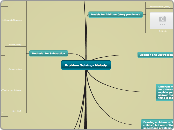jonka Melody Wolen 12 vuotta sitten
572
Problem Solving- Melody

jonka Melody Wolen 12 vuotta sitten
572

Lisää tämän kaltaisia
a+0=a
(8+7)+3=8+(7+3)
8+7=7+8
to conceptualize a number as being made up of 2 or more parts is the MOST important relationship to develop
10 is an essential numbers, must know how any given number relates to ten
knowing which numbers are one more or two less than any given number
5:15-3:45=1:30 (base is 60, have to carry enough over from other place values to have enough minutes)